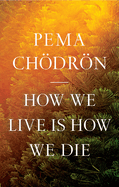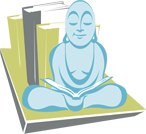
Everything under the sun has the fleeting quality of a dewdrop or a flash of lightning," explains Pema Chödrön, Buddhist nun, spiritual teacher and author of the illuminating How We Live Is How We Die. And the more that people fight to hold that dewdrop in the palms of their hands or attempt to capture that bolt of lightning in a jar, she asserts, the more tired and frustrated they become. Why do they do it? Why do they struggle to arrest the fleetingness of nature? Why is the human species so unwilling to accept the omnipotent force of impermanence? Why do people feel so much suffering in change? Why do they resist life as it is? There are few better guides who get at the heart of these questions than the thoughtful and caring Chödrön (When Things Fall Apart), who utilizes Bardo Tödrol (translated into English as The Tibetan Book of the Dead) in order to walk readers through a journey of self-discovery, universal truth and the meaning of life, death and the time spent in between.
But How We Live Is How We Die is not a self-help book or a secret code to living a happy life. It is the investigation of the religious text that is Bardo Tödrol--and it is a means of transmitting the wisdom and light of that text into the modern world. In a time when people would most like to dwell in the illusion of certainty, Chödrön reminds readers to recognize beauty in unpredictability and to relinquish their grip on a reality that is, and will always be, in flux. --Eamon Stein, freelance reviewer

